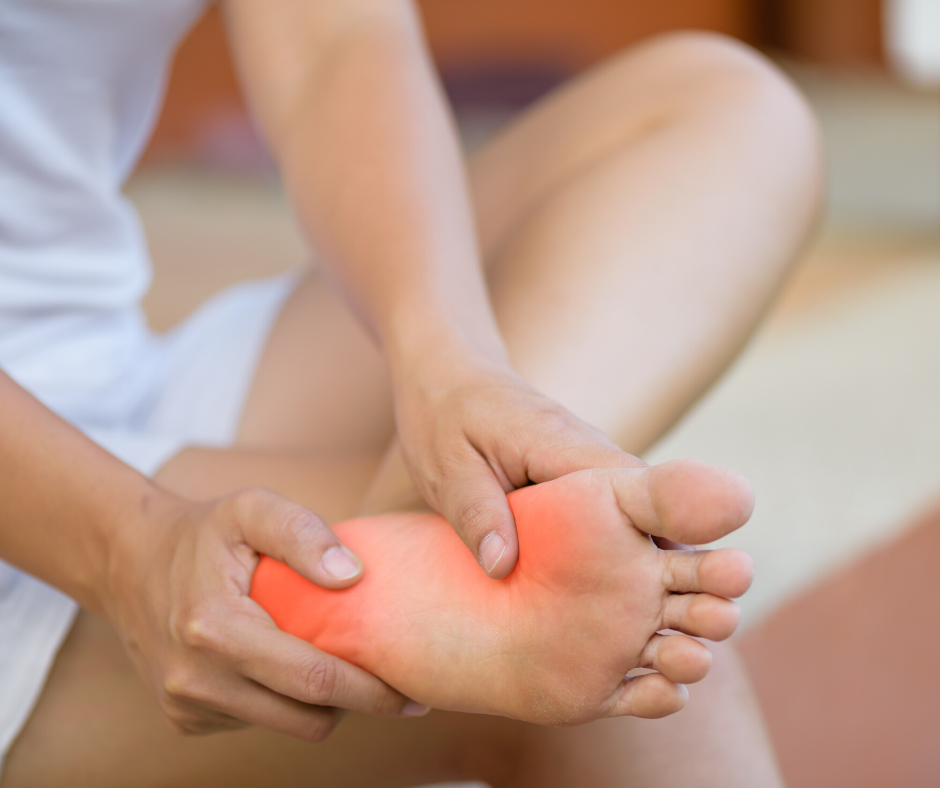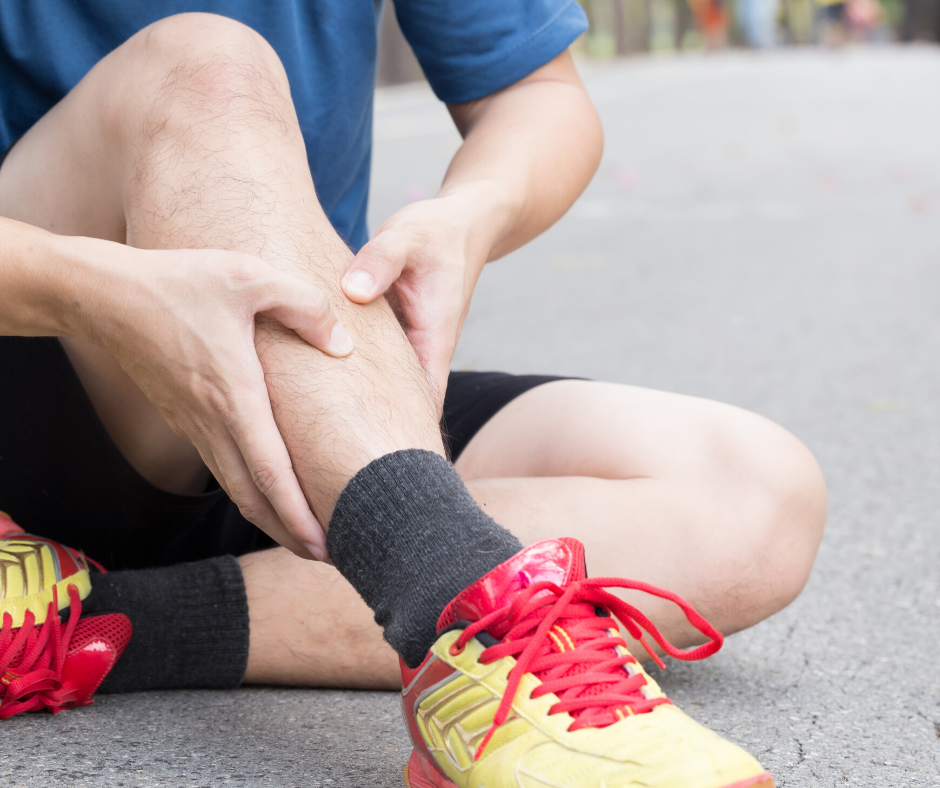
15 Feb The Top Five Running Injuries We Treat
 Ahh, running. Some of us love it, some of us hate it, and 4000 of us partake in the Wellington marathon every year. Our bodies are designed to be able to run, for a certain distance at least – whether that’s around the playground, after our kids, or to improve our fitness.
Ahh, running. Some of us love it, some of us hate it, and 4000 of us partake in the Wellington marathon every year. Our bodies are designed to be able to run, for a certain distance at least – whether that’s around the playground, after our kids, or to improve our fitness.
The more we run, the greater our risk of injury. That’s why up to 70% of recreational runners can develop an overuse injury during a 12-month period, according to Sports Medicine Australia. With this in mind, today the Masterton Foot Clinic team are talking about the top 5 running injuries we see and treat – and tips to help treat and prevent them. Starting with…
1. Achilles Tendinopathy
Feeling a sharp pain or a dull ache at the back of your heel that may radiate up your calf? That’s your Achilles tendon, and it works very hard every time you run. Without it, you wouldn’t be able to transmit that power and force that pushes your foot down into the ground to propel your leg and body forward into your next step.
The Achilles tendon itself connects your calf muscles to the back of your heel bone (calcaneus). Due to the high repetitive force it takes on, step after step, it is vulnerable to damage if it is pushed beyond its limits. As this tendon has a poor blood supply, the greater the damage, the longer the recovery can be.
Tip: A common cause of Achilles injury is exercising with tight calf muscles. Make sure you stretch your calves well before and after every run to reduce your risk of this injury.
2. Heel Pain (Plantar Fasciitis or Heel Spurs)
Plantar fasciitis is one of the most common causes of heel pain in runners. Often, people refer to it as heel spurs (though technically this is a different condition – don’t get us started!). It develops because your plantar fascia fans out across the arch, and your arch is strained during running as your foot pronates (stretching the arch) and supinates (contracting the arch). Combine this with the sheer force and impact of running on your feet (up to three times your body weight!) and it’s no surprise that this is a common complaint we see and treat.
 With this said, there are things that make you more likely, as a runner, to develop plantar fasciitis heel pain. This includes having a flatter foot type (which strains the plantar fascia further) and wearing unsupportive footwear (that doesn’t support and stabilise your feet), among others.
With this said, there are things that make you more likely, as a runner, to develop plantar fasciitis heel pain. This includes having a flatter foot type (which strains the plantar fascia further) and wearing unsupportive footwear (that doesn’t support and stabilise your feet), among others.
The high prevalence of plantar fasciitis among runners is why we’ve developed a ‘proven process’ treatment model – and why we offer innovative solutions like shockwave therapy, currently the first and only provider of this treatment in the Wairarapa.
Tip: If you know you have a flat foot type, be sure to keep your arches supported with good shoes and orthotics. This won’t just help your arch but also many other muscles, ligaments and joints will benefit from the support – and it will further reduce your likelihood of injury.
Other Heel Pain
It must be mentioned that while plantar fasciitis is one of the most common causes of heel pain, there are many others – like damage to the fat pad below your heel. This is why every appointment starts with a comprehensive assessment to confirm your diagnosis. If your pain is from another cause, we’ll create a treatment plan that is uniquely tailored to your problem and symptoms.
3. Stress Fractures
Stress fractures are small hairline cracks in the bones that build up gradually over time. They occur in areas that are under consistently high loads, like the middle and ball of the foot (especially the metatarsals) in running.
When a stress fracture first develops, you may have no symptoms, or may feel a slight niggle or ache. As you continue to load this area during your running sessions, the cracks will spread and worsen. Your dull ache can then progress to a severe ache or a sharp pain that will stop you in your tracks!
At its worst, you may need to wear a moonboot or other offloading device that removes any pressure from the injured bone to effectively start managing your stress fracture and allow the body to begin repairs.
Tip: The smaller the fracture, the easier it is to treat. Running should never cause you pain, so if you feel an ache or discomfort in your lower limbs, see your podiatrist as early as you can. That way you can begin your recovery well before your injury gets to the stage where you have to stop any physical activity completely.
4. Ankle Sprains
Ankle sprains occur when you roll on the outside of your ankle, overstretching the ankle supporting ligaments on the outside of the ankle, and causing them to become damaged. The result is pain, swelling, warmth and redness at the ankle.
Ankle sprains in running are often caused by running on uneven ground, or running in unsupportive footwear, among other causes. As it can make it difficult to put weight on the affected ankle, depending on the severity of the sprain, this injury can set you backwards in your training too.
Tip: When you sustain an ankle sprain, you are much more likely to sprain your ankle again if you don’t effectively rehabilitate and strengthen the ankle supporting ligaments. This is why many people develop chronic ankle instability, as they sustain multiple ankle sprains without taking the time and care to recover properly, leading to permanently weakened ankle supporting ligaments.
If you sprain your ankle, make sure that you recover well and complete rehab exercises to help support and stabilise your ankle for the future. If you need help, see your podiatrist. If you suspect that you already have weak or unstable ankles, use good footwear with stabilising orthotics to help better support your ankle during running.
5. Shin Splints
 Medically known as medial tibial stress syndrome, shin splints cause pain at the front and inside of the shin bone (tibia). It is thought to be caused by tension from the muscles that attach to the front of the shins, as well as inflammation of the tissue that lines the shins.
Medically known as medial tibial stress syndrome, shin splints cause pain at the front and inside of the shin bone (tibia). It is thought to be caused by tension from the muscles that attach to the front of the shins, as well as inflammation of the tissue that lines the shins.
It can come on quickly during running – and is often alleviated by rest, though you may have a dull ache linger through the day.
Tip: Stretching, stretching, stretching. This is another injury where a good warm-up and cool-down can help relieve some of the tightness and tension on the shins, helping to prevent or delay the onset of these symptoms. As once the symptoms start they can quickly appear again during your next run, we recommend finding out what’s causing this problem for you and having it fixed ASAP – before it starts interfering with your family time too!
And if you’re already experiencing pain when running…
… Then come in and see our sports podiatry team here at Masterton Foot Clinic. We’ll start by finding out what’s happening, identifying all the muscles, tissues and bones that are being affected, and understanding WHY it has developed. We’ll then work to not only give you relief from your symptoms as quickly as possible, but also help reduce the likelihood of the problem coming back in the future.
We’re proud to offer innovative treatments like shockwave therapy, which have been clinically proven to be effective in the management of tendon injuries like Achilles tendinopathy and plantar fasciitis. Click here to learn more about how shockwave works.

We’ve been proudly helping the Wairarapa community for almost 20 years – and we’d love to help you too. Call us on (06) 370 4057 or book your appointment online here.


